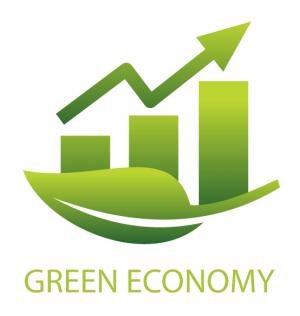Welfare For The Future
Description
Source: Ministry for the Environment, Iceland
Agenda 21 encourages countries of the world to prepare a national sustainable development strategy. At the UN General Assembly Special Session in 1997, countries were encouraged to complete such strategies before the 10th anniversary of the Rio Conference in 2002. The Icelandic government has been working on such a strategy. The first comprehensive policy of Icelandic authorities on environmental affairs, 'Towards Sustainable Development', was prepared in 1993 and followed to a large extent the decisions made at the Rio Conference. Following this policy, an implementation plan was prepared bearing the title 'Sustainable Development in Icelandic Society', which was submitted to a special Environmental Assembly in 1996 and subsequently approved by the government. The strategy presented here is intended as a general framework for policies set by authorities in fields relating to sustainable development in the near future.
The strategy has been prepared by several government ministries, but the comments of municipalities, interest groups, non-governmental organizations and the public have also been sought. The strategy has been formed for a period well into the future, or until 2020, which means that it is intended to be a dynamic document, responding to changes in circumstances and emphases.
The main purpose of the strategy is to: 1) set long-term goals, 2) set priorities for the near future and 3) define and develop criteria to measure progress. The strategy is not an implementation plan, but it can help authorities and others to prioritize projects and gauge the success of trying to promote environmental protection and the quality of life.
SDGS & Targets
Goal 8
Promote sustained, inclusive and sustainable economic growth, full and productive employment and decent work for all
8.1
8.1.1
Annual growth rate of real GDP per capita
8.2
Achieve higher levels of economic productivity through diversification, technological upgrading and innovation, including through a focus on high-value added and labour-intensive sectors
8.2.1
Annual growth rate of real GDP per employed person
8.3
Promote development-oriented policies that support productive activities, decent job creation, entrepreneurship, creativity and innovation, and encourage the formalization and growth of micro-, small- and medium-sized enterprises, including through access to financial services
8.3.1
Proportion of informal employment in total employment, by sector and sex
8.4
Improve progressively, through 2030, global resource efficiency in consumption and production and endeavour to decouple economic growth from environmental degradation, in accordance with the 10-Year Framework of Programmes on Sustainable Consumption and Production, with developed countries taking the lead
8.4.1
Material footprint, material footprint per capita, and material footprint per GDP
8.4.2
Domestic material consumption, domestic material consumption per capita, and domestic material consumption per GDP
8.5
8.5.1
Average hourly earnings of female and male employees, by occupation, age and persons with disabilities
8.5.2
Unemployment rate, by sex, age and persons with disabilities
8.6
8.6.1
Proportion of youth (aged 15-24 years) not in education, employment or training
8.7
Take immediate and effective measures to eradicate forced labour, end modern slavery and human trafficking and secure the prohibition and elimination of the worst forms of child labour, including recruitment and use of child soldiers, and by 2025 end child labour in all its forms
8.7.1
Proportion and number of children aged 5‑17 years engaged in child labour, by sex and age
8.8
Protect labour rights and promote safe and secure working environments for all workers, including migrant workers, in particular women migrants, and those in precarious employment
8.8.1
Fatal and non-fatal occupational injuries per 100,000 workers, by sex and migrant status
8.8.2
Level of national compliance with labour rights (freedom of association and collective bargaining) based on International Labour Organization (ILO) textual sources and national legislation, by sex and migrant status
8.9
By 2030, devise and implement policies to promote sustainable tourism that creates jobs and promotes local culture and products
8.9.1
Tourism direct GDP as a proportion of total GDP and in growth rate
8.10
Strengthen the capacity of domestic financial institutions to encourage and expand access to banking, insurance and financial services for all
8.10.1
(a) Number of commercial bank branches per 100,000 adults and (b) number of automated teller machines (ATMs) per 100,000 adults
8.10.2
Proportion of adults (15 years and older) with an account at a bank or other financial institution or with a mobile-money-service provider
8.a
8.a.1
Aid for Trade commitments and disbursements
8.b
By 2020, develop and operationalize a global strategy for youth employment and implement the Global Jobs Pact of the International Labour Organization
8.b.1
Existence of a developed and operationalized national strategy for youth employment, as a distinct strategy or as part of a national employment strategy
SDG 14 targets covered
Deliverables & Timeline
Resources mobilized
Partnership Progress
Feedback
Action Network


